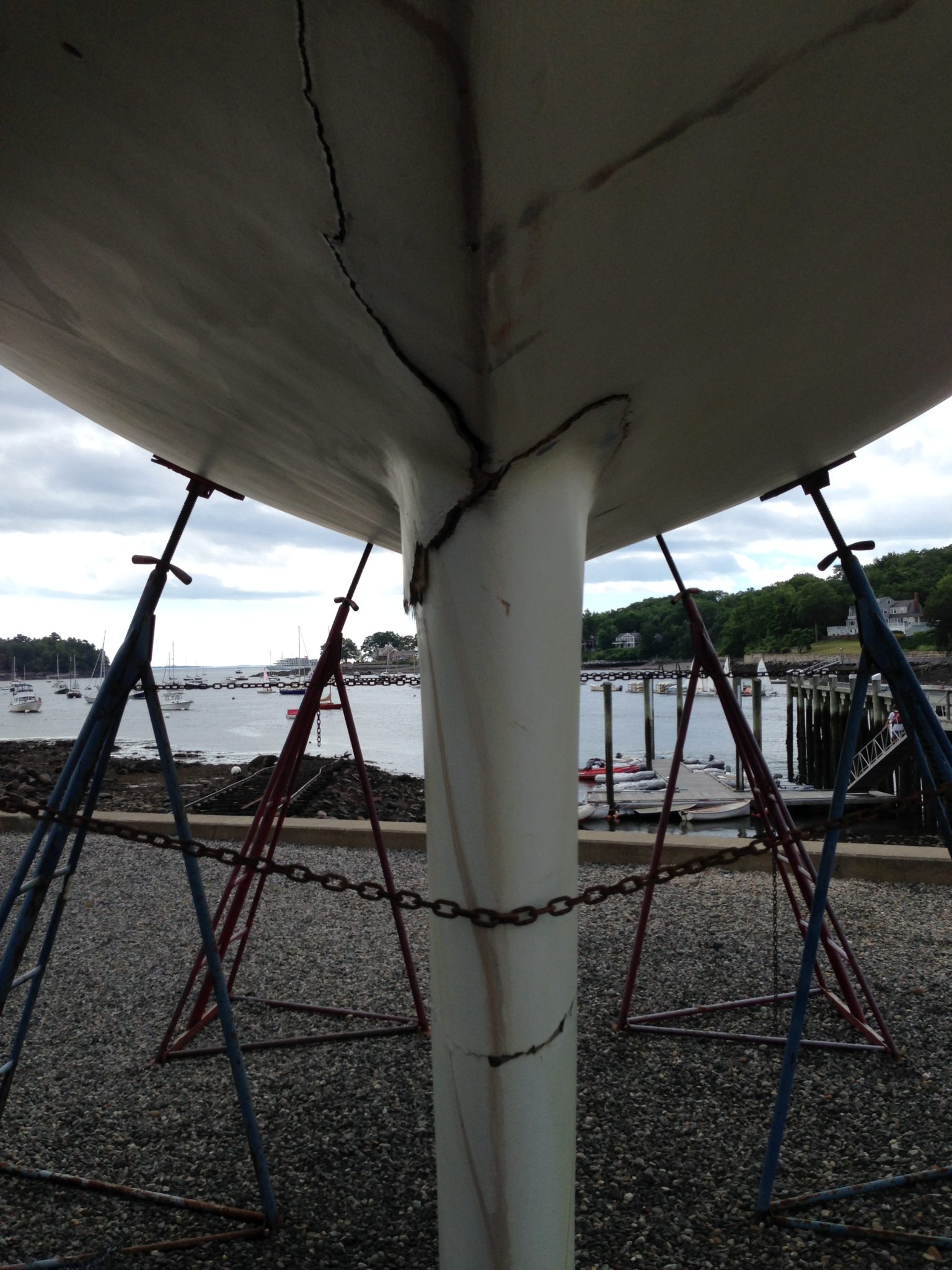Beware the rocks
Rocks + currents = high risk
Rocks + currents + poor visibility = higher risk
Rocks + currents + poor visibility + fast moving vessels =
Beware the rocks
All true but stats show that good visibility and close to home is where most accidents take place on the water.
Rocks + currents = high risk
Rocks + currents + poor visibility = higher risk
Rocks + currents + poor visibility + fast moving vessels =
The above collision with a ledge was so violent it shattered the carbon fibre spar.I've spent time looking online for collisions, especially on our coast. I couldn't find much. As I recall, the only incident I found on record was two fishing boats running into each other far offshore, several years ago. I'd guess they both had radar.
The thing that gets boats around here are the rocks, usually in broad daylight.
Beware the rocks on the coast of Maine.
View attachment 188040

 stephenswaring.com
stephenswaring.com
.... and where most time is spent on the water. I think distraction is a major factor. Perhaps complacency also, in being familiar with the area.All true but stats show that good visibility and close to home is where most accidents take place on the water.
Certainly that is a good description.'close to home complacency'.
That's a good one too.you are a very kind man Tom as we all have come to know here. i would call it "reckless opp".
That is probably because that is when and where most boaters are. Nasty weather and fog will keep most boaters (likely almost all inexperienced boaters) at the dock. Beautiful weather and local grounds are when and where the vast majority of boating happens.you're most likely demise out there is in benign conditions in familiar waters
If that is East Goose Tom, I nearly hit the damned thing once also. Very lucky. I remember that one and the ledge opposite the Mt. Desert town landing in Blue Hill Bay. Another near miss. Nothing like casually glancing over the side at the helm and see a huge ledge seemingly inches below the water. In reality, it was at least 5'-1" below the surface.That's a good one too.
I'll also use 'asleep at the wheel', the old catch-all. I think of this because on forums we tend to equate fog, gales, dark and stormy nights as our biggest demon when in fact (according to boating accident stats), you're most likely demise out there is in benign conditions in familiar waters. And that seems to hold for professional captains as well as I've seen a few career-ending groundings right in my neighborhood.
Back to that same rock the above boats hit, here's a friend's nice woodie that hit it just a few years ago. The boat yard made a few repairs but she kept leaking. They finally did some exploratory surgery and found that the impact was so powerful, it snapped several main ribs in half.
View attachment 188079
Full disclosure: The reason I'm familiar with this particular rock in a well-traveled area of the bay about 5 miles from where I type this, is because I hit it the first year we owned our boat despite passing it countless times for years before (in another boat).
My mistake cost us the last half of the season and almost totaled the boat.
Since then, I'm amazed how much damage that rock has wrought since. I'm always on my best behavior on a beautiful day, close to home. My mantra: Am I where I think I am?
That's it! East Goose itself doesn't go below the surface at HW so no one ever hit that.If that is East Goose Tom, I nearly hit the damned thing once also. Very lucky. I remember that one and the ledge opposite the Mt. Desert town landing in Blue Hill Bay. Another near miss. Nothing like casually glancing over the side at the helm and see a huge ledge seemingly inches below the water. In reality, it was at least 5'-1" below the surface.
Big boat, bad eyesight.Why didn't that captain see the boat (with mast) he ran over?
